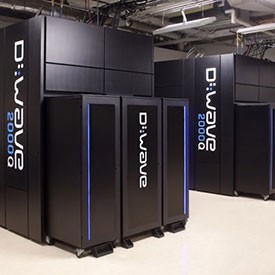If you’re an investor whose goals include earning a decent income from the money you have accumulated, following the Wall Street herd will cost you money: possibly a lot of money.
The investing advice you see, read or are told may not be well aligned with your long-term goals and success. Individual investors who are counting on their portfolios for long term income needs will be best served by learning how to pick a path away from the herd.
There are two themes in play that make it difficult for investors to realize success. The first is the short term focus of the financial news industry. That group focuses on providing entertaining news bites based on data points that change every day. It is a good idea to remember that what you see or read in the financial news is much more about the entertainment part of infotainment than it is about useful information.
The second factor that effects investors are the challenges faced by financial advisors. The typical financial advisor (I know there are exceptions) has a lot on his or her plate besides researching individual investments to discover the very best investments for each individual client. A common practice for full service investment firms is to put client money into portfolios made up of a selection of ETFs that are expected to meet a client’s stated investment goals.
Consider the case of investors who want to draw an income from their portfolio. With this goal, an investor would likely see several popular dividend income ETFs in a portfolio put together by a financial advice firm. Here is a list of those popular income ETFs and their current yields:
- Vanguard REIT Index Fund (NYSE: VNQ) with $35 billion in assets. Current effective yield: 3.86%.
- Utilities SPDR ETF (NYSE: XLU) is the largest utilities ETF with $8 billion in assets. Current yield: 3.07%.
- iShares Select Dividend ETF (NYSE: DVY) is a common stock ETF which as $17 billion in assets. DVY yields 3.1%.
- Vanguard High Dividend Yield ETF (NYSE: VYM) is another stock ETF focused on high-yield common stock shares. VYM has $29 billion in assets. The fund has a current SEC yield of 3.06%.
As you can see, a strategy of using popular income stock ETFs to build a portfolio with produce an average dividend income yield of 3.3%. That means an investor would get just $33,000 per year in income off a $1 million portfolio. I am pretty sure someone living off a million-dollar portfolio would like to receive quite a bit more than $2,750 per month.
The alternate solution for more income is to own a portfolio of individual stocks. There are hundreds of stocks with yields of 6%, 8%, and up into the teens. For my Dividend Hunter service, the primary focus is on the safety of the dividend payments. Yet the current recommended stocks list has an average yield of 8.0%. To illustrate, here is a list of five stocks that are diversified across different financial sectors with very attractive yields:
- Reaves Utility Income Fund (NYSE: UTG) is a utilities sector closed end fund that currently yields 6.1%.
- Hercules Capital Inc (NYSE: HTGC) is a business development company providing capital to growing technology companies. HTGC yields 9.7%.
- Macquarie Infrastructure Corp (NYSE: MIC) owns energy product terminals, power generation facilities and private aviation fixed base operations. This stock yields 7.8%.
- Starwood Property Trust (NYSE: STWD) is a mortgage lender for commercial properties and yields 8.8%.
- InfraCap REIT Preferred ETF (NYSE: PFFR) is a new to the market ETF that only owns preferred shares of equity (property owning) REITs. The preferred shares have a higher safety level when compared to the bulk of the preferred shares market which are issued by lending institutions. PFFR yields 5.6%.
With just five stocks, you have a decently diversified portfolio and an average yield of 7.5%. That is double the average yield of the income focused ETF list above. I do recommend that investors own about 20 stocks for adequate diversification, but the list above gives you a graphic example of how if you learn about income stocks on your own, you can literally double the dividend income you earn off your investment portfolio.
Individual high yield stocks should be the cornerstone of your income portfolio. And these are the kinds of stocks my Dividend Hunter readers are using to build their own income streams… some of them quite massive. These stocks are part of my new income system called the Monthly Dividend Paycheck Calendar. It’s set up so that by following along you could see extra income of as much as $40,000 or more every year… for the rest of your life.
Source: Investors Alley



